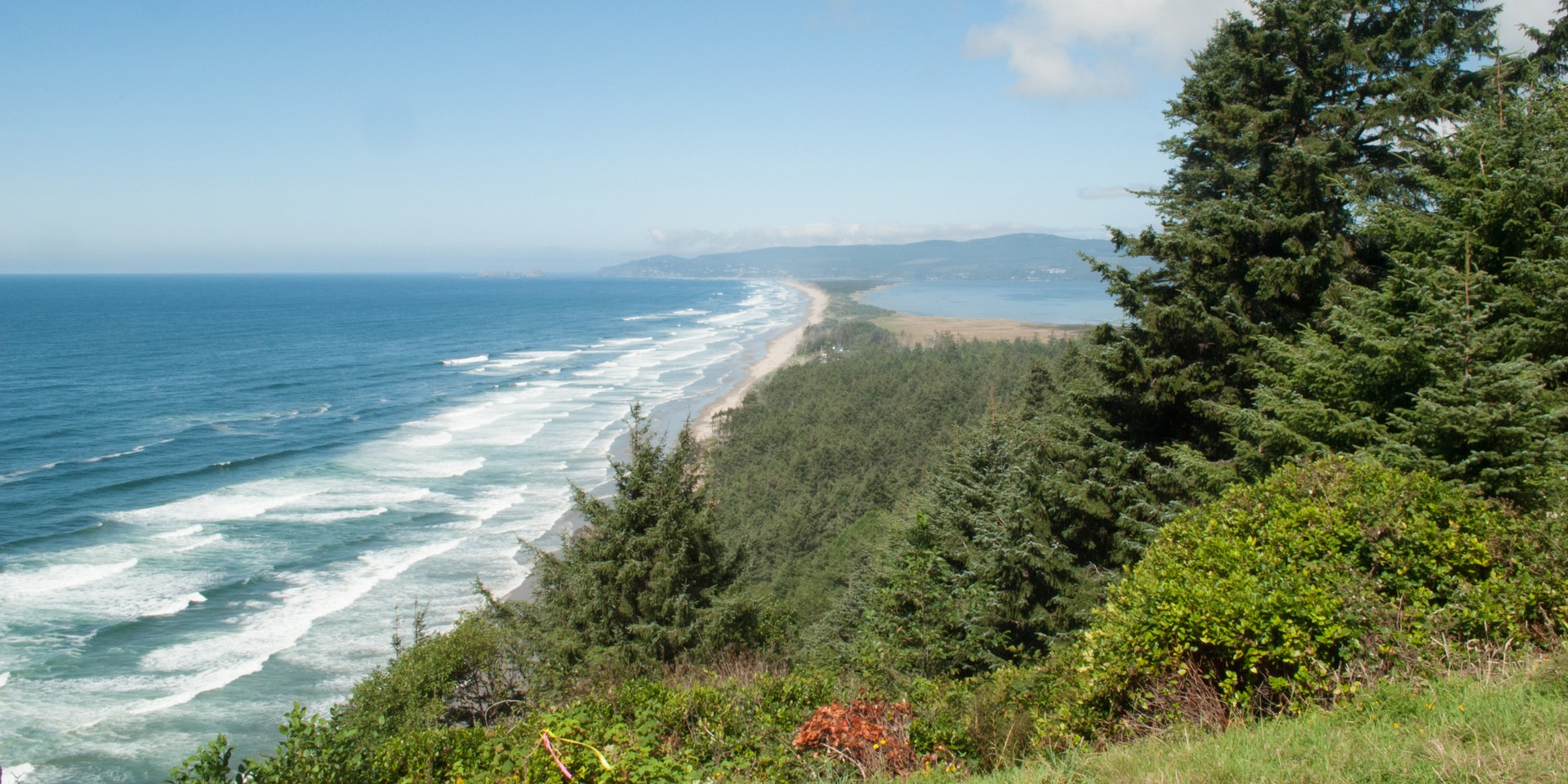Spits are long, narrow landforms developed by the movement and accumulation of beach material due to waves traveling at an angle to the coast. They occur where the coastline changes direction, forming a shallow protected area of water. In this case, Netarts Bay and its narrow mud flats are what formed Netarts Spit.
Cape Lookout State Park includes a large campground with yurts, cabins, and sites for tents and RVs. The day use area provides access to the park’s seven miles of beach and many trails for hiking. To prevent erosion, European beach grass was planted here and along other low areas on the Oregon coast, which created small foredunes. Paths now cut through the dunes at the park for beach access. Since part of the beach gets cut off during high tides, plan to do this hike at low tide.
Begin the hike at the day use area, following an access trail to the beach, and head north for five miles to the end of the spit. The two-mile basalt headland of Cape Lookout is at the south end of the beach, and Netarts Spit heads north all the way to the opening of Netarts Bay. Along the beach the bay is hidden from sight by short dunes, but there are several areas along the dunes to climb up for a view of the bay and Coastal Mountains behind it.
To the north, the small beach communities of Oceanside and Netarts are visible. About a half-mile off of the coastline, Three Arch Rocks National Wildlife Refuge provides protection for more than 150 species of birds, including Oregon’s largest breeding colony of tufted puffins, and it is a pupping site for the threatened stellar sea lion.
At the end of the spit where the ocean and the bay meet, the waves change direction, angling towards shore, splashing into small pools of water along the shoreline. At the tip of the cape, harbor seals sometimes gather to sun, and at low tides, the bay’s mud flats are a popular spot for clamming.




















Comments
Sign In and share them.